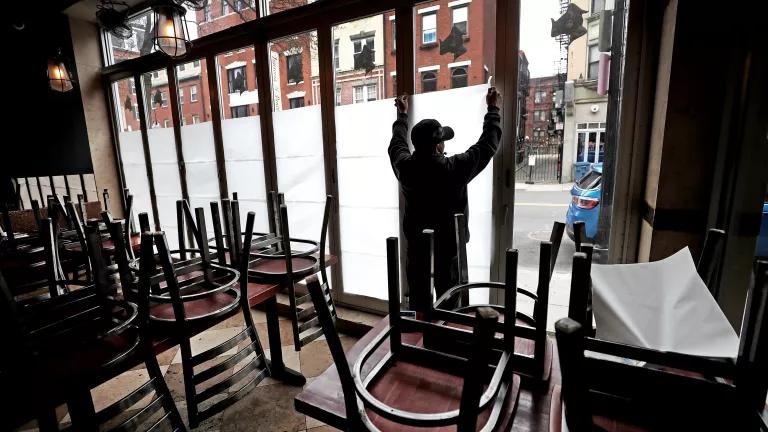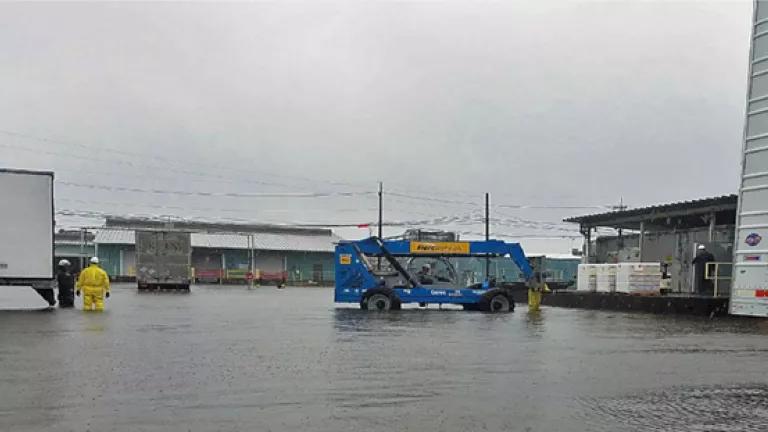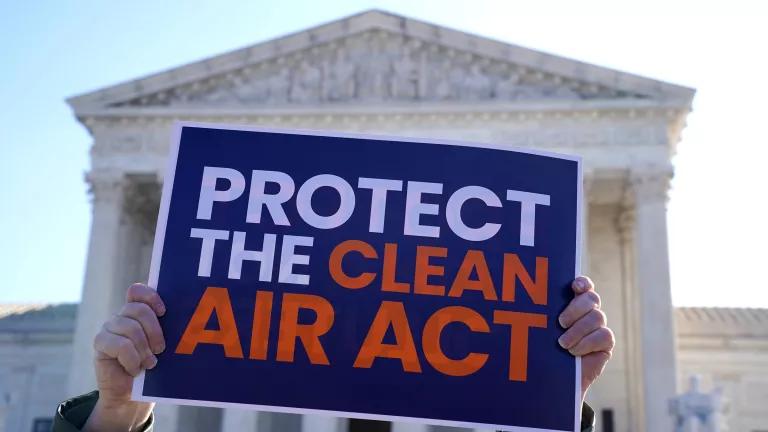Pipeline Victories Show the Power of People
These victories happened because people demanded better—and because of environmental and public health laws that require the government to listen.

Molly Ryan-Kills Enemy of the Sicangu Lakota Nation addresses the 2017 Native Nations March in Denver, where Indigenous organizers and allies gathered to demand the Trump administration respect tribal rights and consent.
These victories happened because people demanded better—and because of environmental and public health laws that require the government to listen.
In the fight against dirty energy, local heroes recorded stunning victories in recent days. Their success underscores the importance of a functioning democracy—and is a testament to the sheer power of people.
Black residents of Union Hill, Virginia, got together to fight a polluting compressor station near their neighborhood and—together with dozens of other community groups across the Southeast—they just stopped the Atlantic Coast Pipeline. Thanks to the Standing Rock Sioux’s legal efforts, a judge ordered the Dakota Access Pipeline to shut down. Farmers, ranchers, and conservation groups stalled the Keystone XL pipeline while the Army Corps of Engineers evaluates and discloses the threats that pipelines pose to wetlands and streams—and the imperiled species that rely upon them.
Moments like these aren’t just coincidences. We are at an inflection point: Clean energy is on the march; these dirty projects aren’t popular and no longer make economic sense.
These victories didn’t just happen on their own. They happened because people got together and demanded better—better for their health, better for their families, and better for their communities. And they were able to do it because of bedrock environmental and public health laws in this country that require the federal government to consider the impact of its plans before taking action. These laws require the government to listen to people before rubber-stamping projects that will define communities—and our nation—for decades to come.
These rights are what our democracy is all about. But right now, they’re under attack.
Rather than making sure that everyone has a fair chance to have their voice heard when a pipeline, highway, or offshore drilling plan is proposed in their community, the Trump administration is working hard to cut people out of the process by curtailing the application of the National Environmental Policy Act (NEPA) and Clean Water Act. This one-two punch is bad for the environment—and bad for residents of communities across the nation.
Both of these laws were designed to help us reverse the polluting excesses of the 1950s and ’60s. Our environmental problems at the time were urgent—rivers caught fire, lead in gasoline and paint harmed children’s development, and many of our cities faced choking smog and soot. To a remarkable degree, these laws have worked because of their design. By giving each of us a say in what gets built and where it gets built, we’ve been able to dramatically improve our air and water quality and work toward restoring key sites, such as the Great Lakes and Chesapeake Bay.
But challenges remain, especially for Indigenous people and communities of color who often bear the brunt of tailpipe pollution and the most polluting industrial facilities. We should be doing much, much more to ensure community voices are included—and listened to—in project decisions that affect their lives. Instead, this administration is taking steps to further silence them.
We will not let them get away with it.
National Environmental Policy Act (NEPA)
First, consider the White House plans to eviscerate the National Environmental Policy Act.
NEPA sets out a simple, yet profound standard: Before the government can take a major action, it needs to inform the public of its plans, consider the environmental impact, and accept public comment. The law requires the government to respond to those comments and consider alternatives before bulldozing a neighborhood for a new highway, allowing oil drilling on public land, or approving a pipeline through a national forest.
To understand its significance, take for example the many federal highway projects before NEPA that were allowed to bisect or entirely uproot Black communities, leaving people cut off from each other and undermining thriving urban neighborhoods. This has had an enduring impact. As my colleague Stephanie Gidigbi explained in a recent article in Politico:
“In the Minneapolis–St. Paul area, construction of Interstate 94 in the 1950s and ’60s slashed through the Rondo neighborhood, which was adjacent to downtown St. Paul and home to four in five of the city’s African-American residents. Black families and businesses were displaced and the community left divided. That destruction still reverberates today in a community that saw widespread protests after the fatal shooting of Philando Castile by police during a routine traffic stop.”
NEPA now gives communities of color a chance to have a say in the projects that will define their neighborhoods for decades to come. It has also helped save Utah’s red rock canyons from oil drilling, protected the Colorado River from toxic uranium mining waste, and kept a lab with dangerous pathogens out of the New York metro area. It just helped block the Dakota Access and Atlantic Coast pipelines from moving forward. And the list goes on.
Yet the Trump administration now wants to move us backward, and either eliminate or curtail environmental reviews by exempting major decisions from reviews altogether and by allowing agencies to ignore the indirect and cumulative impacts of projects. This could mean, for example, disregarding the climate impacts of burning coal from a mine that’s proposed for public land or the impacts of the gas exported from a liquefied natural gas facility.
While the Trump administration’s plan as proposed is unlikely to survive legal challenge, its intent is clear: to silence people with legitimate concerns in order to fast-track polluting projects.
Clean Water Act
Likewise, the Clean Water Act has done much to give individual citizens a voice in protecting water quality in our lakes, rivers, streams, estuaries and wetlands.
Similar to NEPA, the Clean Water Act establishes a government review and public participation process that evaluates how a project or development could harm a protected body of water. The process enables stakeholders to ensure that discharges don’t contribute to waterways becoming too polluted for swimming or fishing and to weigh in where wetlands may be destroyed.
When I was at EPA, we put in place a Clean Water Rule that made clear what kinds of streams, wetlands, and other water bodies were protected by the Clean Water Act. Under that rule, we protected rain-dependent streams in the West and also many prairie pothole wetlands, which serve as critical duck habitat and perform other important ecological functions.
However, the Trump administration tossed this commonsense rule out and replaced it with an inadequate and unscientific replacement. By exempting many waters from the nation’s signature law protecting waterways, projects that pollute or disturb water bodies will escape review.
Once again, it takes away our voice and our ability to participate in the democratic process.
The success of frontline communities against powerful pipeline developers this week shows us what’s at stake—and why we must fight the Trump administration’s efforts to try and silence us. It also shows us the power we have to stop them. And we are not going to back down.


